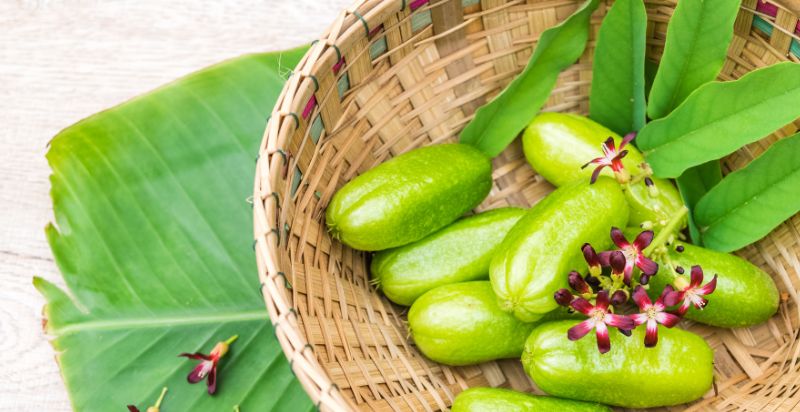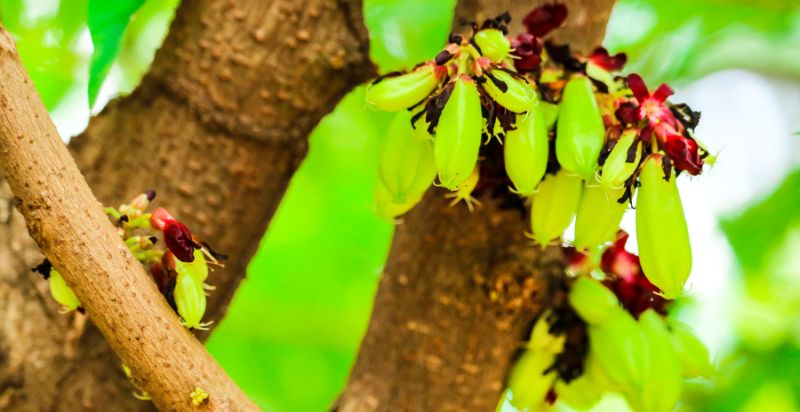Bilimbi fruit is a tropical plant native to the Philippines, India, and some parts of Southeast Asia. It is usually found in backyard gardens and roadside stands throughout these regions and has been used for centuries as a natural remedy for various ailments. The bilimbi has a unique flavor, combining sourness with sweetness. Its tart taste makes it an ideal addition to garnish or marinade dishes. Here is everything you need to know about bilimbi fruit.
What are Bilimbi, and why are they so popular?
Bilimbi is a tropical fruit that looks like small cucumbers and is usually eaten fresh or cooked. The skin of the bilimbi is thin, green, and smooth, while its flesh is white and crisp. Its tart taste adds an interesting flavor to curries and soups. The fruit can also be used in jams and jellies and to make refreshing drinks.

History and Origin of the Bilimbi:
Bilimbi is believed to have originated in the Philippines, India, and Southeast Asia. It has been used for centuries as a natural remedy for stomach pains and skin diseases. Fruit is also believed to be a good source of energy and nutrition.
What are the health benefits of Bilimbi?
Bilimbi is rich in Vitamin C, calcium, iron, and other minerals that can help improve your overall health. It also contains antioxidants that can help boost immunity and reduce inflammation. In addition, it has anti-bacterial and antifungal properties, making it a great natural remedy for skin problems. Finally, bilimbi has diuretic qualities that can help flush toxins from the body.
Where is Bilimbi Grown and Harvested?
The bilimbi tree is usually found in backyard gardens and roadside stands throughout the Philippines, India, and Southeast Asia. The fruit is usually harvested when it is still green and firm, ensuring its tart flavor remains intact. It can be stored for up to 6 months if kept in a cool, dry place.

Nutritional Content of Bilimbi:
Bilimbi is a nutrient-rich fruit containing vitamins A and C, calcium, iron, and other minerals. It also contains antioxidants that can help reduce inflammation and boost immunity. In addition, it is low in calories, fat, and sodium, making it a great snack for those watching their weight.
Flavor profile of the Bilimbi:
One of the most distinctive features of bilimbi is its unique flavor. It has a tart, sour taste balanced by a hint of sweetness. This makes it an ideal addition to curries, soups, and other dishes where a tangy flavor would be appreciated. Bilimbi can also be used as a garnish or marinade to add an interesting twist to any meal.
How do you prepare Bilimbi Fruit?
Bilimbi can be enjoyed both cooked and in its raw form. Wash the fruit thoroughly and remove any soft spots or blemishes to prepare it. It can then be sliced into wedges or cubes for salads, soups, and curries. Alternatively, the fruit can be boiled or stewed to soften its texture and bring out its sweet flavor.

Where to find the best quality Bilimbi Fruit?
The best place to find fresh bilimbi fruit is at local markets and roadside stands in the Philippines, India, and Southeast Asia. It can also be found online or in some health food stores in large cities worldwide. When purchasing it, look for firm, green skin with no soft spots or blemishes.
How to store Bilimbi Fruit?
Bilimbi should be stored in a cool, dry place for six months. It can also be frozen for longer-term storage. To freeze it, slice the fruit into wedges or cubes and store it in an airtight container or bag. When ready to use, thaw the bilimbi at room temperature before adding it to dishes.
How to pick Bilimbi Fruit?
When picking bilimbi, look for firm green skin with no soft spots or blemishes. The fruit should also have a nice tart-sweet smell. Avoid any wrinkled or discolored fruit, as this may indicate it is not fresh. Finally, try to pick bilimbi that is uniform in size and shape for easy preparation.
Conclusion
Bilimbi is a unique and flavorful fruit with a variety of health benefits. It can be enjoyed both cooked and raw and used in salads, soups, and curries. Bilimbi is widely available in Southeast Asia and in some health food stores worldwide.
When selecting it, look for firm green skin with no soft spots or blemishes. Then store it in a cool, dry place for up to 6 months. With its distinct flavor and health benefits, bilimbi will become a favorite ingredient in your kitchen!
- Everything You Wanted to Know About Red Tamarillos - June 2, 2025
- A Guide to Tulips: Everything You Need to Know & More… - June 2, 2025
- Guanabana: Description, Flavor, Benefits, And Uses - May 27, 2025

3 thoughts on “Bilimbi Fruit: Description, Flavor, Benefits, And Uses”
Comments are closed.